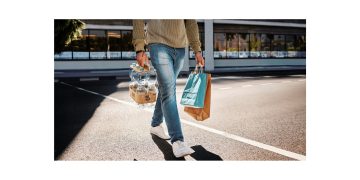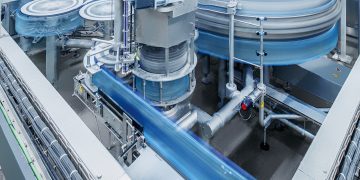You might have heard the term sustainable packaging being thrown around lately, but what does it really mean? Is there a short answer explanation? Sustainable packaging should be eco-friendly and resource-efficient, but in terms of labelling it does not tell the whole story. In order to achieve sustainability in packaging, you must adopt label technologies that reflect a whole systems approach-from materials design to end-use-and work in harmony with the existing recycling stream. This makes a circular economy where manufacturers, retailers, consumers, and recyclers all benefit from sustainable practices. PP Duo Label Solutions as the self-adhesive label producer. believes that sustainable labeling is a promising option that plays on consumers’ interest and concern for sustainability. Many companies have already started making labels that can be composted or recycled along with their products. In recent years, there has been a rise in closed-loop packaging, which actually incorporates recycled material from other sources. These changes bring us closer to meeting our goal – delivering on more efficient ways to use fewer resources while still creating high quality adhesive labels for consumer products thorough Europe.
Self-adhesive labels are part of product throughout its lifecycle. We know that they tell us what’s inside, but there is more to labels than meets our eyes. They carry multiple messages that shape consumer’s decisions about how what they buy. In fact, labels affect us more than we realize— for example their information on sustainability can even impact whether a product is recycled or thrown away. But first, consumers need to recognize those messages as being important. People must first identify as having a vested interest in sustainable packaging before they will care about its label content. This may be a psychological hurdle for many people who do not want to acknowledge their stakeholder responsibilities as conscious individuals within society.
Too often, labeling is overlooked as a key component of product design and manufacturing. But labels can have a huge impact on both waste and recycling streams. One of packaging’s key functional elements is information provision. Labels and messages on product packaging provide essential information to consumers, such as ingredient lists and nutritional value, product recall notices, contact details for customer service and so on. Secondly, in order to create packages that are truly sustainable, we need to reevaluate our labeling approach. Consumers don’t want to compromise on design—but they may be willing to make a change if a package is clearly identified as either recyclable or made from recycled content. A package could be 100% recyclable and have a perfect mix of content materials— and it still might not be accepted by all recycling facilities, because of the wrong application of adhesive label. That said, we would like to emphasize that labels can’t only tell customer everything they need to know, but they can also influence on the recycling ability of your product. If the label won’t fill the requirements of being washed-off while cleaning process or easily removed or being „mono” with flexible packaging then all your sustainability approach ends up with fiasco.
So how to make sustainable labelling a reality? In our opinion we must first rethink a design. Design-for-environment principles take into account materials used, as well as end-of-life considerations. In other words, labels need to be designed from inception with their life cycle in mind. As eco-labels initiative have proven one of more popular sustainable design trends so far. They work by giving businesses incentives—financial or otherwise—to use packaging materials that are more environmentally friendly. Common eco-labels include carbon reduction, recycled content, energy efficiency and water saving labels. We believe that smart design can help sustainable packaging by leveraging label technologies that work symbiotically with local, existing recycling infrastructure. Current model of designing products and their packaging to be disposable is unsustainable. And, because we have a mature and robust stream of recyclables, there is no impetus for change at a materials level. This has resulted in an industry paradigm where primary packages are deliberately designed for disposal. The consumer then takes it upon themselves to dispose of that package properly, or not at all—either way leaving a void that downstream sorting technologies can’t easily capture.
PP Duo Label Solutions as a self-adhesive label producer recognizes that sustainability isn’t just a buzzword, it’s a movement that starts with you. Through taking into account product and its packaging with synergistic labeling, it becomes possible to have a label that is both highly visible and highly functional.




















